Related Research Articles
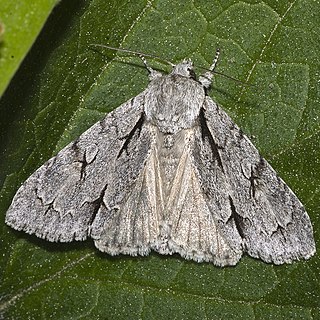
Acronicta is a genus of noctuid moths containing about 150 species distributed mainly in the temperate Holarctic, with some in adjacent subtropical regions. The genus was erected by Carl Linnaeus in his 1758 10th edition of Systema Naturae. Caterpillars of most Acronicta species are unmistakable, with brightly colored hairy spikes, and often feed quite visibly on common foliate trees. The hairy spikes may contain poison, which cause itchy, painful, swollen rash in humans on contact. The larva of the smeared dagger moth is unusually hairy even for this genus. Acronicta species are generally known as dagger moths, as most have one or more black dagger-shaped markings on their forewing uppersides. But some species have a conspicuous dark ring marking instead.

Agylla is a genus of moths in the subfamily Arctiinae. The genus was erected by Francis Walker in 1854.
Apistosia is a genus of moths in the subfamily Arctiinae. The genus was erected by Jacob Hübner in 1823.
Callindra is a genus of tiger moths in the family Erebidae described by Röber in 1925. It consists of a number of South and East Asian species, reviewed by Vladimir Viktorovitch Dubatolov and Yasunori Kishida (2006), with the type species, Callindra arginalis.
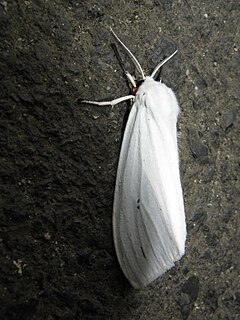
Chionarctia is a genus of tiger moths in the family Erebidae erected by Nobutoyo Kôda in 1859. The moths in the genus are found in east Asia.
Katha is a genus of tiger moths in the family Erebidae. The genus was erected by Moore in 1878.
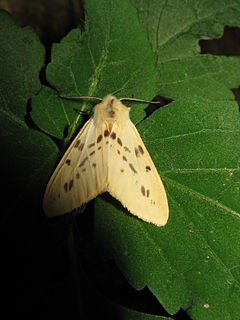
Lemyra is a genus of tiger moths in the family Erebidae. The genus contains many species from East and South Asia, Sundaland and Australia. It was described by Francis Walker in 1856.
Micrarctia is a monotypic tiger moth genus in the family Erebidae described by Seitz in 1910. Its only species, M. trigona, was first described by John Henry Leech in 1899. It is found from the Chinese provinces of Qinghai and Sichuan.

Miltochrista is a genus of moths of the family Erebidae, subfamily Arctiinae. The genus was erected by Jacob Hübner in 1819.
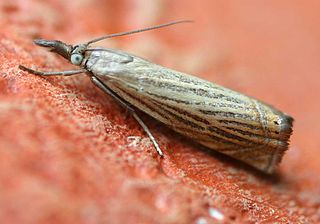
Chrysoteuchia is a genus of moths of the family Crambidae described by Jacob Hübner in 1825. Most are native to Asia.

Herpetogramma is a genus of moths of the family Crambidae described by Julius Lederer in 1863. It currently comprises 106 species and is found in North America, Eurasia, Australia, New Zealand, Central and South America. Of the few species where host plants are known, the larvae mostly feed on grasses.

Nacoleia is a genus of moths of the family Crambidae described by Francis Walker in 1859.

Udea is a genus of snout moths in the subfamily Spilomelinae of the family Crambidae. The genus was erected by Achille Guenée in 1845. The currently known 214 species are present on all continents except Antarctica. About 41 species are native to Hawaii.

Pyrausta is a speciose genus of moths of the family Crambidae. The genus was erected by Franz von Paula Schrank in 1802.

Paracymoriza is a genus of moths of the family Crambidae.
Pantana is a genus of tussock moths in the family Erebidae. The genus was erected by Francis Walker in 1855.
Episteira is a genus of moths in the family Geometridae described by Warren in 1899.
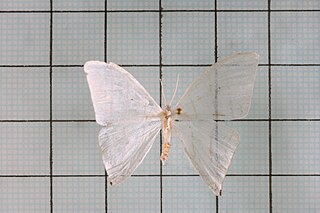
Ditrigona is a genus of moths belonging to the subfamily Drepaninae. The genus was erected by Frederic Moore in 1888.
Asiapistosia subnigra is a moth of the subfamily Arctiinae. It was described by John Henry Leech in 1899. It is found in the Chinese provinces of Shaanxi, Zhejiang, Fujian, Hubei, Hunan, Sichuan, Yunnan and Guangdong.
Asiapistosia is a genus of moths in the subfamily Arctiinae.
References
- ↑ Savela, Markku (May 30, 2015). "Hypeugoa Leech, 1899". Lepidoptera and Some Other Life Forms. Retrieved October 18, 2019.